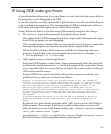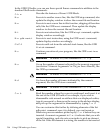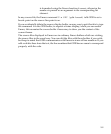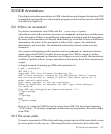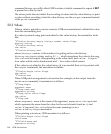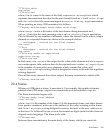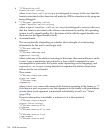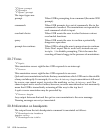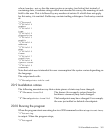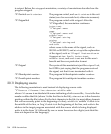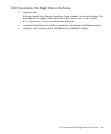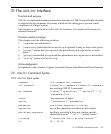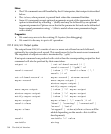where source-intro-string separates for the user's benefit the reference from
the text which precedes it, filename is the name of the source file, and
line-number is the line number within that file (the first line is line 1).
If GDB prints some information about where the frame is from (which library,
which load segment, etc.; currently only done on the RS/6000), it is annotated with
^Z^Zframe-where
information
Then, if source is to be actually displayed for this frame (for example, this is not
true for output from the backtrace command), then a source annotation (see
“Displaying source” (page 304)) is displayed. Unlike most annotations, this is output
instead of the normal text which would be output, not in addition.
20.5 Displays
When GDB is told to display something using the display command, the results of
the display are annotated:
^Z^Zdisplay-begin
number
^Z^Zdisplay-number-end
number-separator
^Z^Zdisplay-format
format
^Z^Zdisplay-expression
expression
^Z^Zdisplay-expression-end
expression-separator
^Z^Zdisplay-value
value
^Z^Zdisplay-end
where number is the number of the display, number-separator is intended to
separate the number from what follows for the user, format includes information
such as the size, format, or other information about how the value is being displayed,
expression is the expression being displayed, expression-separator is intended
to separate the expression from the text that follows for the user,and value is the actual
value being displayed.
20.6 Annotation for GDB input
When GDB prompts for input, it annotates this fact so it is possible to know when to
send output, when the output from a given command is over, etc.
Different kinds of input each have a different input type. Each input type has three
annotations: a preannotation, which denotes the beginning of any prompt which is
being output, a plain annotation, which denotes the end of the prompt, and then a post-
annotation which denotes the end of any echo which may (or may not) be associated
with the input. For example, the prompt input type features the following annotations:
20.5 Displays 301



